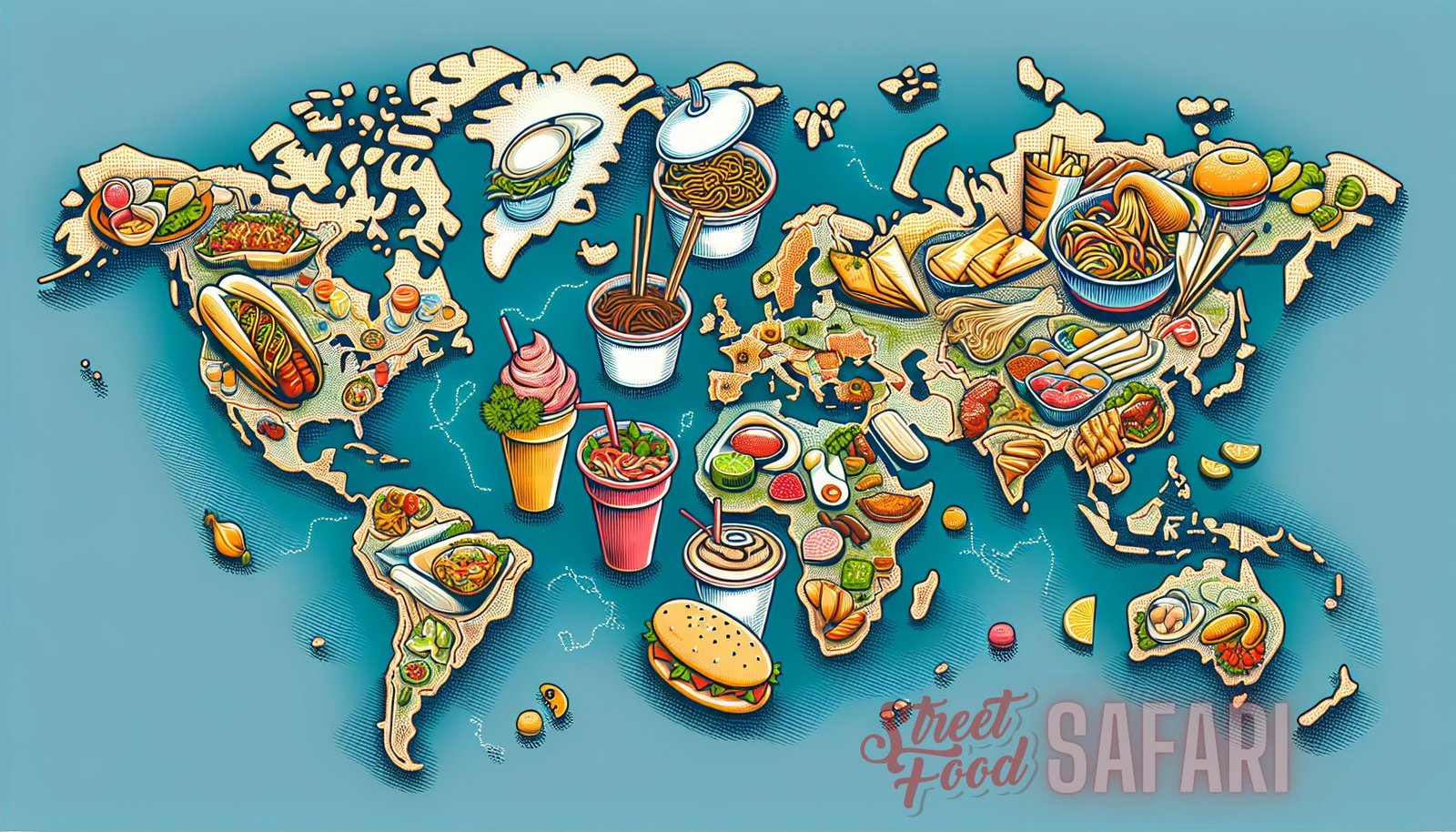Introduction
The culinary world has seen a remarkable evolution over the years, with one of the most significant shifts occurring in the realm of street food culture. Street food has become an integral part of the global gastronomy scene, offering a wide range of delicious and unique dishes that reflect a country’s culture, history, and traditions. This article will trace the evolution of street food culture, exploring its roots, the factors that have contributed to its rise in popularity, and the impact it has had on global cuisine. From the bustling streets of Bangkok to the food markets of Mexico City, we will embark on a journey to uncover the culinary crossroads of street food.The Origins of Street Food
Street food has its origins in ancient civilizations, where it served as a convenient and affordable meal option for the masses. In cities such as Rome, street vendors known as “hucksters” sold a variety of food items, including roasted chestnuts, sausages, and honeyed pastries. Similarly, in ancient China, street food stalls were a common sight, offering dishes like dumplings, noodles, and stir-fried vegetables.Over the centuries, street food culture continued to thrive globally, adapting to the changing times and local tastes. In India, for example, street food has a long history, with vendors known as “hawkers” selling savory snacks like samosas and chaat. In the Middle East, street food markets known as “souks” have been an integral part of the region’s culinary identity, offering dishes like falafel, shawarma, and kebabs.
The Rise of Street Food Culture
In recent years, street food has experienced a resurgence in popularity, both locally and internationally. Several factors have contributed to this rise:1. Urbanization and the Growth of Cities
As cities continue to grow in size and population, the demand for quick and convenient meals has increased. Street food offers a perfect solution, providing delicious and affordable options for busy urban dwellers. The rise of urbanization has created a thriving market for street food vendors, who now cater to a diverse range of tastes and preferences.2. Social Media and Food Tourism
The advent of social media platforms like Instagram and Facebook has played a significant role in promoting street food culture. Food lovers now have access to a wealth of visually appealing images and videos that showcase the vibrant and mouth-watering street food scenes from around the world. This has led to a rise in food tourism, with travelers seeking out unique street food experiences as they explore new destinations.3. Food Trucks and Pop-Up Markets
The rise of the food truck phenomenon has also had a significant impact on street food culture. Food trucks provide a mobile platform for vendors to showcase their culinary skills and reach a wider audience. Pop-up markets and events have also become increasingly popular, bringing together a diverse range of street food vendors in one location, creating a vibrant and dynamic food scene.Regional Delights: The Evolution of Street Food
From the vibrant night markets of Taiwan to the bustling streets of Tokyo, street food culture has evolved in unique ways in different regions of the world. Let’s take a closer look at some of the iconic street food dishes that have become synonymous with specific countries and regions.Asia
– Thailand: Pad Thai, a stir-fried noodle dish, and Satay, skewered and grilled meat, are iconic street food dishes in Thailand. The bustling streets of Bangkok are home to numerous street food vendors offering a variety of dishes, each bursting with flavors and spices. – Taiwan: The night markets of Taiwan are a food lover’s paradise, offering a wide range of delectable street food options. From stinky tofu to bubble tea, visitors can indulge in a culinary adventure like no other. – Japan: Ramen, sushi, and takoyaki are just a few examples of the diverse street food offerings in Japan. Tokyo, in particular, is known for its street food scene, with vendors lining the streets, serving up delicious and innovative dishes.Middle East
– Lebanon: Shawarma, a dish made of grilled, shaved meat, and falafel, deep-fried balls made from ground chickpeas or fava beans, are popular street food choices in Lebanon. These dishes are often served with freshly baked flatbread and a variety of flavorful dips. – Morocco: The bustling streets of Marrakech are famous for their vibrant food markets, known as “souks.” Here, visitors can sample dishes like tagines, couscous, and Moroccan pastries, each offering a unique blend of flavors and spices.
Americas
– Mexico: Tacos, quesadillas, and tamales are just a few examples of the mouth-watering street food options in Mexico. From the bustling food markets of Mexico City to the beachfront stalls of Playa del Carmen, visitors can experience the vibrant flavors of Mexican cuisine firsthand. – United States: Street food culture in the United States has seen a remarkable evolution, with food trucks and pop-up markets becoming increasingly popular. Cities like New York and Los Angeles are known for their diverse street food scenes, offering everything from gourmet burgers to artisanal ice cream.The Impact of Street Food Culture on Global Gastronomy
The rise of street food culture has had a profound impact on global gastronomy, influencing the way people eat and perceive food. Here are some of the ways in which street food has shaped the culinary landscape:1. Innovation and Creativity
Street food has become synonymous with culinary innovation and creativity. Vendors constantly experiment with new flavors, ingredients, and cooking techniques, pushing the boundaries of traditional cuisine. This spirit of innovation has spilled over into high-end restaurants, inspiring chefs to create unique and exciting dishes.2. Preservation of Culinary Traditions
Street food plays a crucial role in preserving culinary traditions and cultural heritage. Many traditional dishes that have been passed down through generations find their roots in street food culture. By embracing street food, communities can ensure the survival of these traditional dishes and keep their culinary traditions alive.3. Economic Opportunities
Street food culture provides valuable economic opportunities, especially in developing countries. It offers a platform for small-scale vendors to start their own businesses and earn a livelihood. Additionally, street food markets and events attract tourists, contributing to the local economy and promoting cultural exchange.The Future of Street Food Culture
As street food continues to gain popularity, its future looks promising. Here are some trends and developments to watch out for in the coming years:1. Sustainable Practices
With increasing concerns about the environment, sustainability has become a key focus within the food industry. Street food vendors are embracing sustainable practices, such as using locally sourced ingredients, reducing food waste, and utilizing eco-friendly packaging.2. Fusion Flavors
The blending of different culinary traditions and flavors is a trend that is likely to continue. Fusion street food dishes that combine elements from different cuisines are becoming increasingly popular, providing a unique and exciting culinary experience.3. Street Food Festivals
Street food festivals and events are set to become even more popular, attracting food lovers from around the world. These gatherings offer a platform for vendors to showcase their culinary skills and for visitors to sample a diverse range of dishes.In conclusion, the evolution of street food culture has transformed the culinary landscape, offering a diverse range of dishes that are both affordable and delicious. From the ancient streets of Rome to the bustling night markets of Taipei, street food has become a global phenomenon, embodying the flavors and traditions of different cultures. As street food continues to evolve, it will undoubtedly shape the way we eat and appreciate food for years to come.
For more information about the evolution of street food culture and its impact on global gastronomy, check out these articles on Street Food Safari’s site: – Global Street Eats – Taste Journeys

